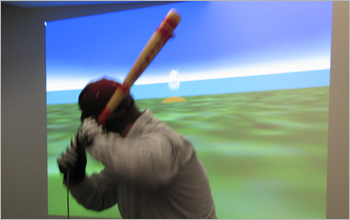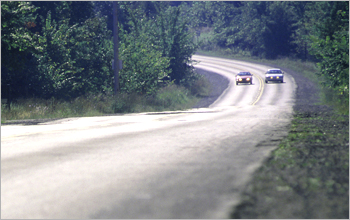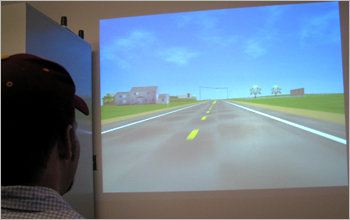All Images
Research News
"Crash" Course in Visual Perception and Motor Control

Expert baseball players rely on 'motor memory' to hit the ball, which frees their attention to focus on subtle environmental cues, such as the pitcher's body language or the count. Novice players are still internalizing the physical process, so the extra attention to the task improves performance.
Credit: photos.com

Realistic simulations of an approaching ball, a pitcher and a baseball field are combined with real-time recording of the movements of the bat and the batter's limbs. This allows researcher Robert Gray to have precise control over the available visual cues, typical of most laboratory experiments, while at the same time allowing the participant to respond to these cues in a more natural, active way.
Credit: Perception and Action Laboratory (PAL), Department of Applied Psychology, Arizona State University

Misperceiving an oncoming car's arrival time can be especially dangerous in highway driving due to a perceptual phenomenon called "motion adaptation." This effect, caused by the repetitive motion of objects in the field of view, can cause drivers to think they have more time available to overtake than is actually available, potentially leading to rear-end or head-on collisions.
Credit: photos.com

In Robert Gray's driving simulator, participants "drive" their car through realistic road scenes with other traffic, pedestrians and traffic signals. He uses the simulations to study driving situations (such as overtaking when the driver has been adapted to motion) that would be too dangerous to investigate on real roads.
Credit: Perception and Action Laboratory (PAL), Department of Applied Psychology, Arizona State University


